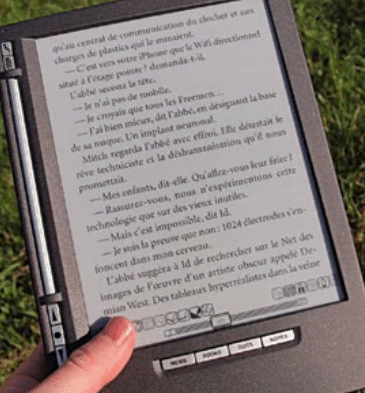Wearable Displays
Output Device
Uses of output devices: Wearable Display
Introduction
Hello class!
Welcome to today's lesson on output devices (Wearable devices).
Before we begin, let us quickly go through what we have learned in our previous lesson about input and output devices by answering the short questions below:
1. What is an input device?
An input device is a piece of equipment used to provide data and control
signals to the computer.
Examples of input devices include;
Keyboard, Mouse, Barcode Reader, Joystick, Biometric Machine, etc.
2. What is an output device?
An output device is equipment that gives out or displays the result of
the entered input, once it’s been processed.
Examples of output devices include;
Printer, monitor, television, speaker, projector, etc.
Differences between input devices and output
An input device is a hardware device that is used to key in the data, instructions, or commands, into the computer while an Output device is a hardware component that uses the data that it has received from the computer to carry out a task.
let us look at our objectives for today's lesson
By the end of the lesson, the student will be able to:
1. Discuss the uses of output devices such as Wearable Displays, E-paper, and E-Books.
2. Describe Wearable Displays (e.g., Google glass), E-paper, and E-Books.
3. State the uses of wearable devices such as Google glass, Athos gear e.t.c.
Wearable Display
When we say something is wearable what comes to mind?We can say that a wearable is something which is easy to wear or suitable to
wear.
So, when we talk of wearable displays as applied to computing or technology, it’s a field of portable smart or electronic devices that are worn on the body.
These wearable devices are used for tracking information
on a real-time basis.
They have sensors that take a snapshot of your day-to-day
activities and sync them with mobile devices or laptop computers. After the
invention of smartphones, wearable electronics are the next big innovation in
the world of technology.
Even before wearable technology entered the consumer market, these wearable devices were used in the field of military technology. In fact, these devices were an integral part of the medical and healthcare sector in the military forces.
Devices like wearable Motherboards or Smart Shirts are used to monitor the health and wellbeing of the patients and send back information to the hub station in real-time.
Wearable displays
Smart Contact lenses or smart glass:
Nothing short of a sci-fi movie, smart contact lenses that can deliver real-time information to the human eye will be available to consumers soon. Tech giants, including Google, Mojo Vision, Samsung, and Song, are working on developing these soft electronic smart contact lenses that can sync up with smartphones or other external devices to provide real-time, hands-free information along with vision correction. It can be used in application development.
Google Glass:
It’s a wearable, voice, and motion-controlled Android device
that resembles a pair of eyeglasses and displays information directly in the
user’s field of vision.
Google Glass offers an augmented reality experience by using
visuals, audio, and location-based inputs to provide relevant information.
For example, upon entering an airport, a user could
automatically receive flight status information.
Athos Gear:
Source: www.sporttechie.com
It’s a device that is used to help with your fitness
programs and monitor your progress usually coming in the form of a bracelet. However,
Athos decided to step ahead of the curve and make fitness wearables more
effective by producing the most comfortable wearable fitness tracker yet, Athos
Smart Apparel.
Athos uses the science of Electromyography (EMG) to
understand what’s happening at each muscle. By embedding sensors into upper and
lower body garments, athletes can capture EMG virtually in any
environment.
Uses of Wearable displays:
Wearable devices can be used for;
- Health and fitness tracking,
- chronic disease management,
- Interactive gaming,
- Performance monitoring,
- and navigation tracking on a real-time basis.
They have motion sensors that take a snapshot of your day-to-day
activities and sync them with mobile devices or laptop computers.
E-paper:
E-paper displays are widely used
in e-readers, real-time bus arrival information, electronic shelf label (ESL)
segments, digital menu boards, traffic signs, and, logistics monitoring devices.
It reflects ambient light like paper. This may make them more comfortable to
read and provide a wider viewing angle than most light-emitting displays.
CLOSURE
Before we end today's lesson, let us look at what we have so far.
we have looked at:
1. The Definition of wearable displays.
2. The various examples of wearable displays such as Google glass and others.
3. Uses of wearable displays in hospitals and our daily lives.
Now that we have known what wearable displays are and their uses, I would like to know if you really understood the lesson by doing this assignment.
Kindly watch the video below and also listen to the audio lesson below for more clarification:
Listen to the audio below:




Comments
Post a Comment